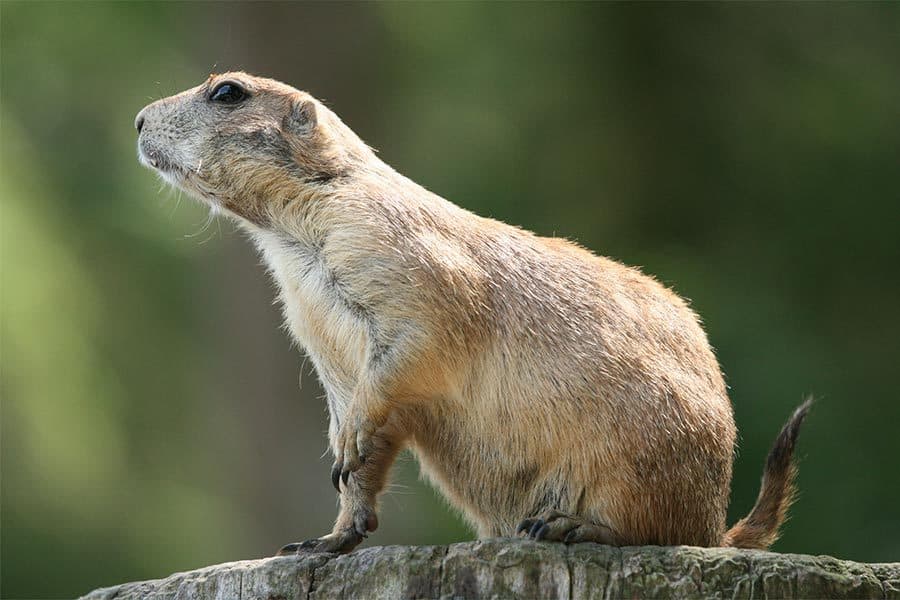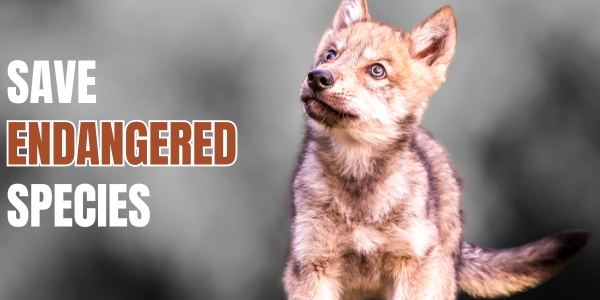Photo credit: Chadh, Wikimedia Commons
Black-tailed prairie dog (Cynomys ludovicianus) | ESA status: petitioned for listing
Black-tailed prairie dog
Black-tailed prairie dogs build colonies in the Great Plains grasslands of the United States, southern Canada, and northern Mexico. Sociable animals, they pop in and out of their networks of excavated tunnels, keeping watch for predators and communicating with a complex system of yips and barks.
A keystone species
Many species depend on black-tailed prairie dogs and their burrows. Predators including black-footed ferrets, swift foxes, golden eagles, and ferruginous hawks hunt the rodents for food. Snakes, cottontail rabbits, burrowing owls, beetles, and salamanders make their homes in prairie dog burrows or use them to shelter from the midday heat. Hungry prairie dogs also maintain the colony’s vegetation, keeping it neatly trimmed and thereby providing nutritious, fresh forage for grazers like bison and pronghorn.
What are the threats to the black-tailed prairie dog?
In the 1800s, before Europeans settled and drastically transformed the Great Plains, black-tailed prairie dog colonies covered thousands of acres and contained millions of prairie dogs. Since then, these creatures have been poisoned, shot, plowed under, and bulldozed out of up to 99 percent of their historic range. Despite their keystone role, in many states they are categorized as a vermin or pest species and persecuted by humans. Prairie dogs face the additional threat of sylvatic plague, a non-native disease which can kill entire colonies.


What WildEarth Guardians is doing to preserve the black-tailed prairie dog
To protect our rapidly disappearing grassland heritage, we have pressed for protection for this species under the Endangered Species Act for more than a decade. Sadly, the U.S. Fish and Wildlife Service declared the black-tailed prairie dog “not warranted” for listing in 2009. Still, we will not rest until these animals at the heart of the American grassland receive the protection they deserve. We are now working to create local management plans that reduce or eliminate lethal control of this important species.
Historical Significant Actions
“Report from the Burrow 2017: Forecast of the Prairie Dog” (report) February 2017
“Report from the Burrow 2016: Forecast of the Prairie Dog” (report) February 2016
“Report from the Burrow 2015: Forecast of the Prairie Dog” (report) February 2015
“Report from the Burrow 2014: Forecast of the Prairie Dog” (report) February 2014
“Report from the Burrow 2013: Forecast of the Prairie Dog” (report) February 2013
“Report from the Burrow 2012: Forecast of the Prairie Dog” (report) February 2012
“Report from the Burrow 2011: Forecast of the Prairie Dog” (report) February 2011
“Report from the Burrow 2010: Forecast of the Prairie Dog” (report) February 2010
U.S. Fish and Wildlife Service issues a “not warranted” listing determination for the black-tailed prairie dog December 2009
“Report from the Burrow 2009: Forecast of the Prairie Dog” (report) February 2009
U.S. Fish and Wildlife Service issues a positive preliminary finding on petition to list the black-tailed prairie dog December 2008
“Report from the Burrow 2008: Forecast of the Prairie Dog” (report) February 2008
WildEarth Guardians and partners petition to list the black-tailed prairie dog August 2007
Wildlife Press: Black-tailed prairie dog
USDA’s Wildlife Services continued its reckless slaughter of coyotes, bears, and wolves in 2020
While overall less native wildlife was killed by Wildlife Services in 2020, native carnivore killing remained rampant
Read more >